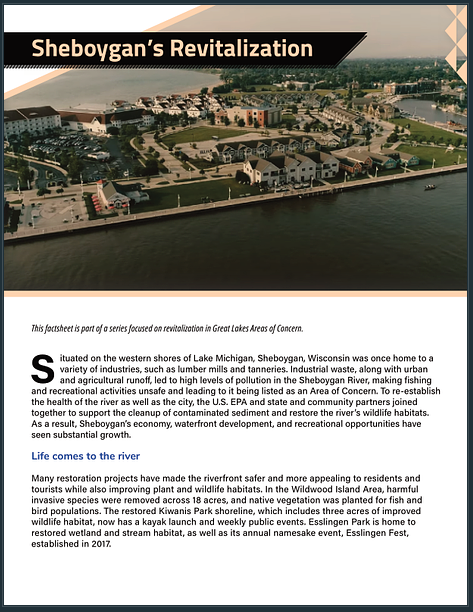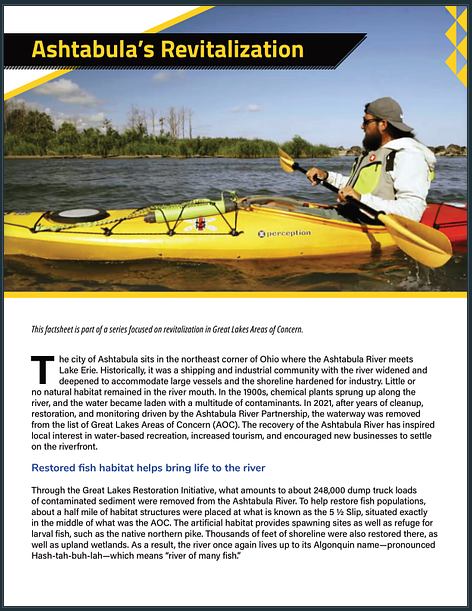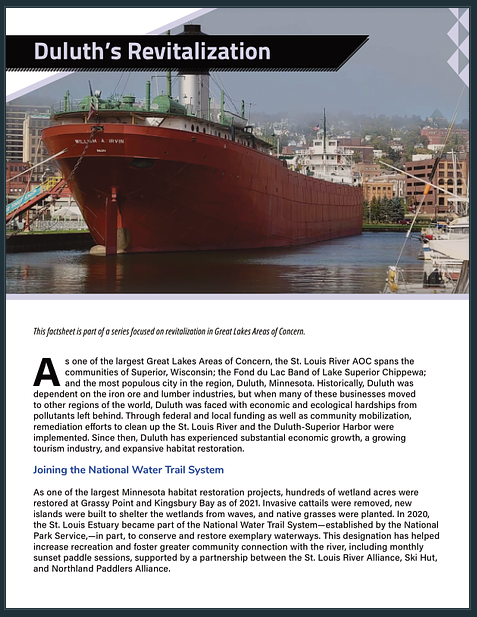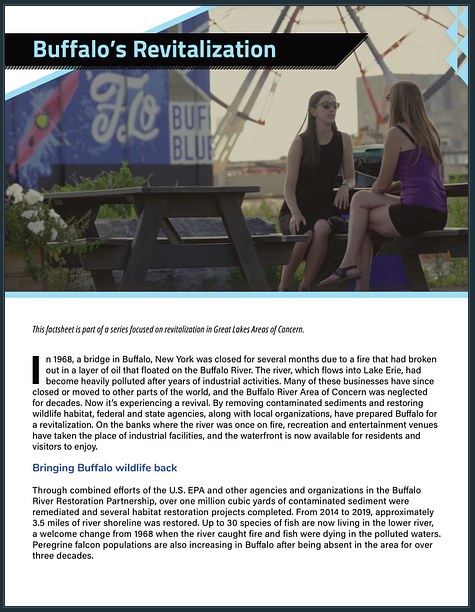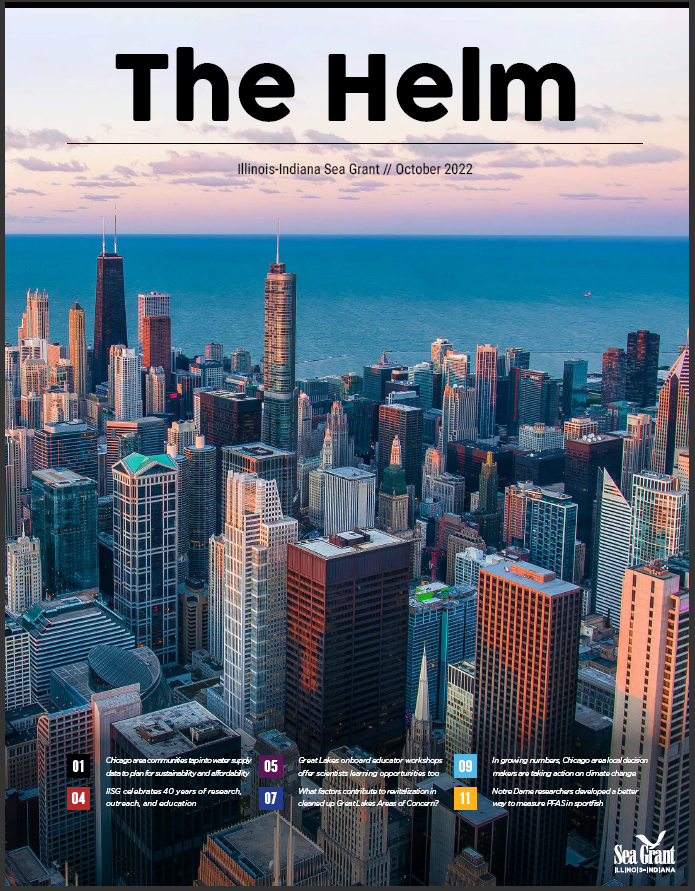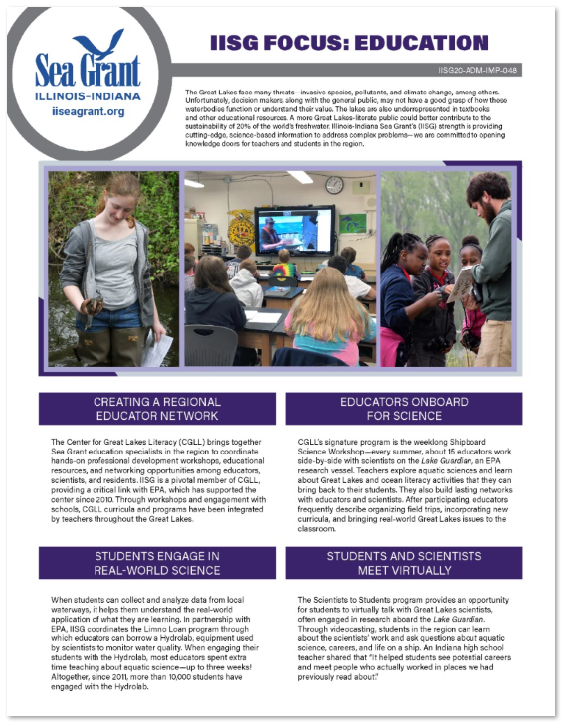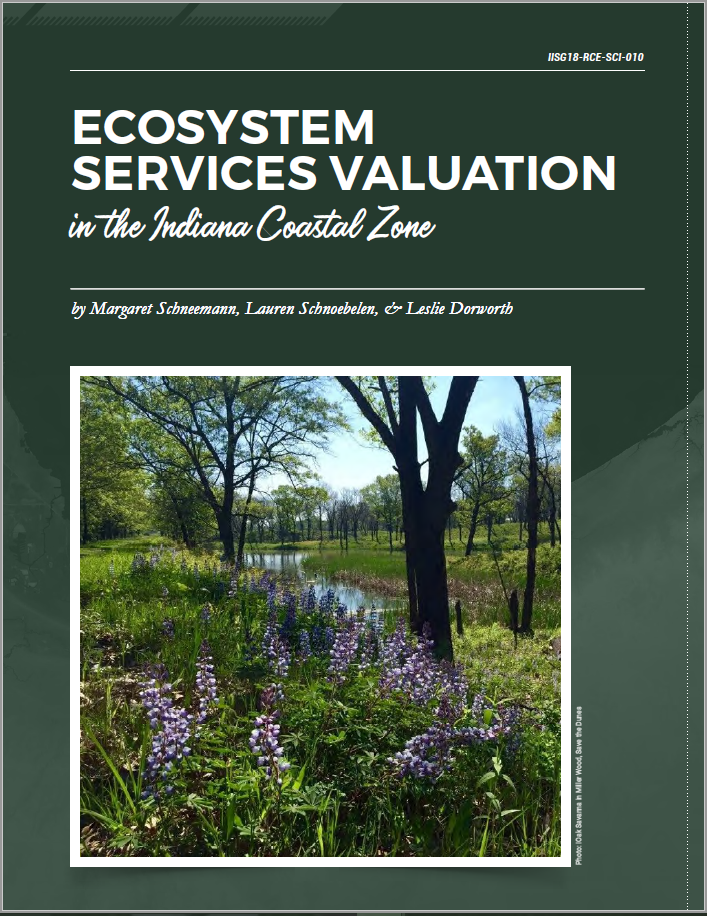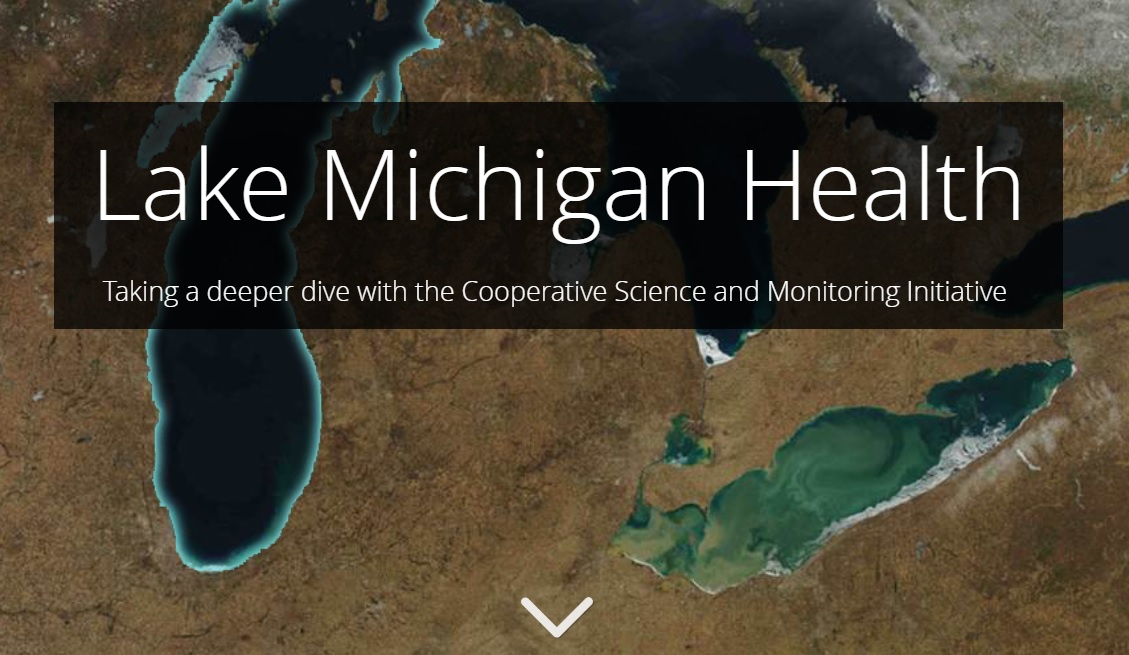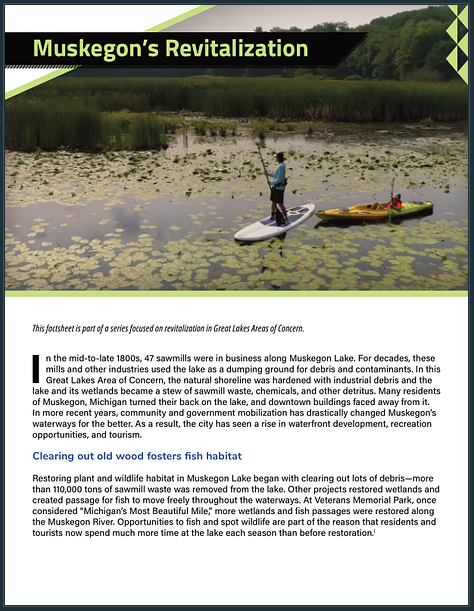
File Size: 2.29 MB
A Great Lakes Area of Concern, Muskegon Lake in Michigan has undergone a cleanup through the Great Lakes Legacy Act. As a result, the city of Muskegon has seen environmental, economic, and quality of life benefits.
Citations:
- Paul Isely Erik Nordman Kendra Robbins Julie Cowie. Muskegon Lake Area of Concern Habitat Restoration Project: Socio-Economic Assessment Revisited. July 2020.
- Ibid.
- Ibid.
Other Resources
- Great Lakes Commission: Assessing the Investment—The Economic Impact of the Great Lakes Restoration Initiative: A Case Study of Muskegon, Michigan
- International Association of Great Lakes Research: Great Lakes Revival: How Restoring Polluted Waters Leads to Rebirth of Great Lakes Communities (pp. 39-46)
- Livability: Transforming Waterfronts Along the Muskegon Lakeshore
- Western Michigan Regional Shoreline Commission: Muskegon River Habitat Restoration at Veteran’s Memorial Park
- NOAA Fisheries: Muskegon Lake Nears Recovery After Years of Restoration
- MiBiz: Arts playing ‘huge role’ in shaping downtown Muskegon through pandemic
- WZZM Channel 13: A successful Muskegon festival season by the numbers
- WOOD Channel 8: ‘Hidden gem’ discovered: Muskegon Lake ripe for development
- FOX Channel 17: Great Lakes cruises bring passengers, revenue to Muskegon
- MLIVE: Marquette to Muskegon: Cruise ships bring big tourism dollars to the Great Lakes
- Detroit Free Press: Cruise ships to visit Muskegon again after 2 years of COVID-19 cancelations
En Español
Revitalización de Muskegon en español está aquí.

